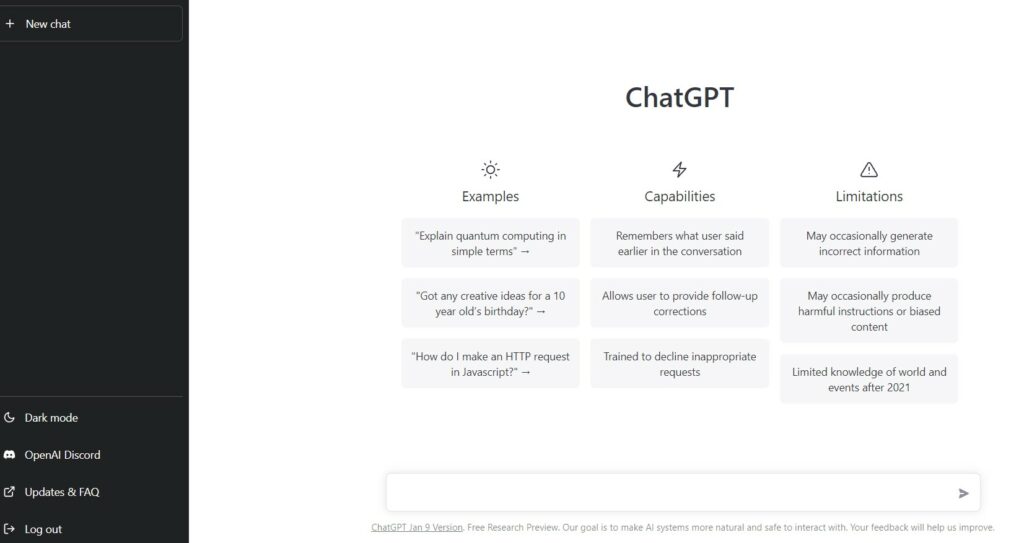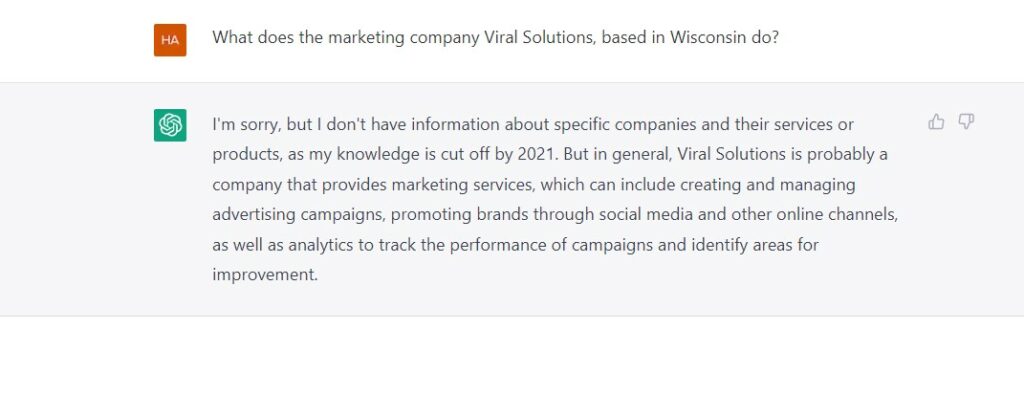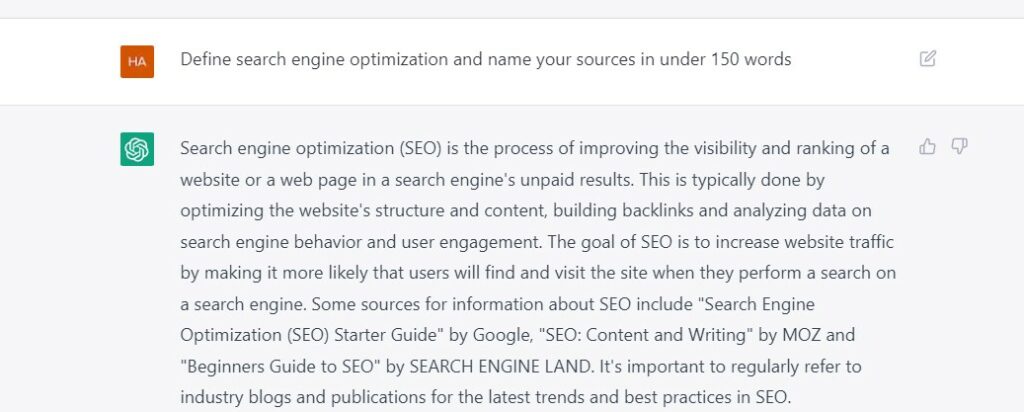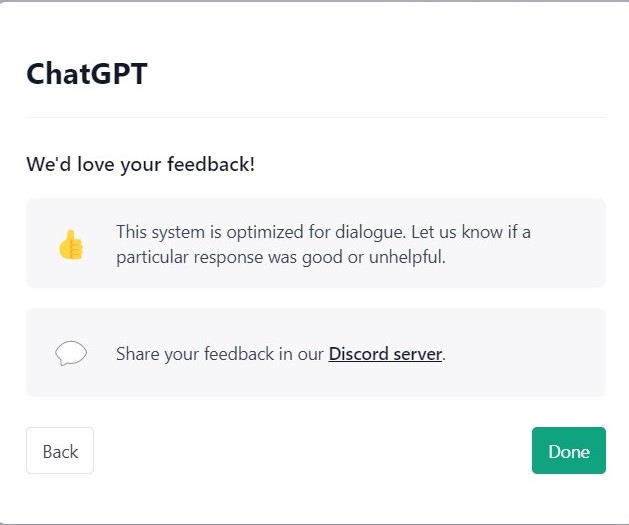
Intro to ChatGPT – Part 1: What Is ChatGPT?
Since its release late last year, ChatGPT has been a hot topic on social media and among tech commentators. Many people have been talking about how it will transform the way the public interacts with technology. If you’ve heard the buzz and are wondering what ChatGPT is, you get a pass for thinking it’s a harbinger of the end—or maybe just the beginning—of times.
There’s no doubt that ChatGPT is a new kind of chatbot, capable of understanding complex questions, providing expressive answers, telling jokes and stories, and writing poetry.
And it’s a significant step toward AI technology simulating human-like intelligence, thought processes, and creativity.
Some view ChatGPT as inevitable progress in the evolution of AI technology as it becomes increasingly valuable for our daily lives. The use of AI in digital marketing has already shown a lot of promise. But time will tell just how useful it can be.
I see ChatGPT as just another stage of innovation. It’s just a new tool designed to automate tasks and take marketing down the path of increased efficiencies.
In this intro to ChatGPT, we will discuss what ChatGPT is, who developed it, and how you can use it. In parts 2 and 3 of the series, we’ll look at its limitations and the controversy that swirls around it.
Let’s dive in…
What Is ChatGPT?
ChatGPT is the newest and most powerful AI chatbot that answers questions and converses in a way that, just a few years ago, we thought only people could. Trained using millions of documents, including transcripts of real conversations, and taught further by human AI trainers, it can predict how people respond to each other.
These attributes have generated the most excitement for its users, astounding them with what questions it can understand and the human-like answers it provides.
When Was It Released?
ChatGPT was initially released on November 30, 2022, by OpenAI.
Currently, it’s free to use, though there are plans for a paid pro version of ChatGPT down the road. As of right now, those using it are serving as beta testers.
Who Owns ChatGPT?
ChatGPT was created by OpenAI, a research-based nonprofit that focuses on creating autonomous AI systems that can outperform humans for the benefit of humanity.
OpenAI gets backing from multiple investors interested in developing AI’s potential. This has allowed it to raise some $29 billion, including an additional $10 billion pledged by Microsoft, according to multiple news outlets. Other investors include internet entrepreneur and LinkedIn cofounder Reid Hoffman’s charitable foundation, Lever for Change, and Khosla Ventures, which provides venture capital to organizations developing “breakthrough technologies.”
How Was It Developed?
ChatGPT is the result of years of research. It’s based on GPT-3.5, an upgraded version of the natural language text generator GPT-3. OpenAI released this earlier version in 2020 after developing it for several years.
OpenAI trained ChatGPT using billions of written samples on Microsoft’s Azure Cloud in 2021. It used large language model (LLM) technology to search the database and create sentences by predicting the probability of…
- What words belong together
- What order they should go in
- How they relate to your question
This enables it to develop logical, well-structured answers and participate in a meaningful dialogue.
OpenAI introduced human AI trainers and created guardrails to reduce “outputs that are untruthful, toxic, or reflect harmful sentiments” that GPT-3 was notorious for.
The company is aware that the system needs improvement and can still provide plausible-sounding incorrect or nonsensical answers and be lengthy and repetitive. It also may answer questions it does not understand instead of asking clarifying questions.
How Does It Compare to Other Tools?
ChatGPT shares some similarities with traditional search engines like Google. Both technologies sort through a massive amount of data to answer your questions with the most relevant information available. But search engines and ChatGPT approach this goal differently.
- Search engines provide links to the most relevant information on the internet to answer your search query.
- ChatGPT not only searches its database for answers but also creates and serves unique content for you.
On the other side, ChatGPT is often referred to as a chatbot…
So far, chatbots, which use automated speech recognition (ASR) to recognize words, can only answer simple questions and respond to a limited number of commands. Although they can seem knowledgeable with longer answers, they usually read snippets of what’s available on the internet.
In short, you can’t have a conversation with them. But ChatGPT takes the art of AI conversation to a new level. It’s able to ask follow-up questions, admit mistakes, challenge statements, and refuse to answer inappropriate questions, according to OpenAI.
What Can ChatGPT Be Used For?

ChatGPT has gained notoriety as a way for AI to help students complete analytical writing assignments, answering questions in styles ranging from Snoop Dogg to Shakespeare. Users also have enjoyed the challenge of trying to get around the safeguards designed to prevent answers from causing offense or suggesting users do something illegal or dangerous.
But what is ChatGPT really for—beyond providing endless entertainment for curious and mischievous users?
It’s actually intended for far more basic uses, such as getting information, technical advice, and help with creative writing. Since it was released recently, its usefulness will become apparent over time. That said, the technology seems helpful for various purposes, including the following:
- Helping programmers debug coding errors
- Writing blogs, books, essays, papers, etc.
- Creating business and personal correspondence
- Providing practical advice
- Translating for non-native speakers
Unsurprisingly, ChatGPT has its own suggestions of how it can be of use. When asked how it could help you up your marketing game, this is what it suggested…
- Generating high-quality, unique content for websites, social media, and other platforms
- Training chatbots that can engage with customers and provide information and assistance
- Personalizing communication, including emails and direct mail
- Writing compelling ad copy for Google, Facebook, and other platforms
- Analyzing customer feedback to improve products and services and identify pain points and preferences
But that’s not all. ChatGPT could be adapted to be useful anywhere a chatbot is. It could also be used for optimizing online content and helping marketers with the process of writing.
ChatGPT will speed up SEO optimization of content and help writers with their writer’s block.
How Does ChatGPT Work?
Given its popularity, it’s no surprise that many people are playing around with ChatGPT. Unfortunately, this means it’s often at capacity. When you can get in (you can request a notification when space opens up), you can try it out by following the steps below.
1. Create an Account
To use ChatGPT, you’ll need to create an account on the webpage. Once you’ve signed up and read the various disclaimers relating to the tool’s accuracy, you can ask questions.

The interface is simple to use, with just a few options to choose from. Once you type in your question, wait for a few seconds, and you’ll see it start typing in the answer box.
2. Chat with ChatGPT
While chatting, you’ll see your conversation unfold on the site. It remembers what you said earlier, which can add to the conversational experience.
If you don’t like a response or want to see something different, you can ask it to “regenerate” its answer.
If ChatGPT doesn’t understand or can’t answer the question, it may show you an error message. Alternatively, ChatGPT may tell you why it can’t answer the question and ask for clarification.
Note that it doesn’t provide information about individuals or businesses.

If the answer is too long, you can ask it to stick to a word limit.

While it doesn’t provide links to its sources, you can ask it to. For example, when asked for a definition of SEO and the names of its sources, ChatGPT listed articles by Google, MOZ, and Search Engine Land.

3. Provide Feedback
Since this is a free version for testing purposes, OpenAI wants feedback to improve the experience. If ChatGPT gives an answer you like, you can give it a thumbs-up. If not, you can give it a thumbs-down. Either way, it will invite you to explain why. You can also request corrections to wrong answers.

4. End Chats and Start New Ones
Once you are done with one conversation, you can start a new one or click on the link to a chat you’ve already had, picking up where you left off.
5. Review and Edit
ChatGPT is still in the trial stage, and the company offers no guarantees that answers are accurate. In fact, they are open about their potential to be wrong. So, unless you’re using ChatGPT for fun or curiosity, don’t trust it for accuracy.
That means fact-checking, reviewing, and editing anything you want other people to see. And if you are a professional writer or student, don’t pass it off as original work.
Takeaway
ChatGPT is a far more sophisticated version of existing chatbots. It can understand multi-level questions, provide eloquent answers, tell jokes and stories, and write poetry—among other things.
Trained using billions of documents, including transcripts of real conversations, it has a deeper level of understanding than any AI chatbot before it. And already, it’s showing that it has the potential to go a long way toward helping business owners and marketers.
Despite all the excitement about what it can do, it also has limitations and has generated a big debate about trust in its answers, safety concerns, and the fact that bad actors can use it.
Read the second part of this series to learn how much ChatGPT's limitations affect its usefulness.


